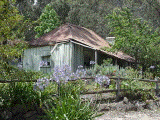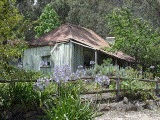Thermal insulation
Materials generally available for building purposes can be classified into two generic groups – bulk materials and reflective foil laminates (RFL). The first of these relies on the resistance of air trapped in pockets between the fibres of the blanket type materials (mineral fibre materials) or the cells formed in the foamed structure of board or slab type materials (usually made from plastics such as polystyrene and polyurethane foams). The second reflects radiant energy away from the object or surface being protected. Thermal insulation in the outer fabric of a building is a vital component of an energy-efficient design strategy. The key to successful energy-efficient design is the control of heat flow through the external fabric. All the solar energy gained could be easily lost from an inadequately insulated building before it is able to be of benefit. It will have been noted that some materials have a very much higher thermal resistance per unit thickness than others irrespective of their density. The fact that air is a good insulator especially if it is bounded by a bright foil surface to limit radiation transfer can be very useful as well.
Cooling
In many parts of the world a passive solar building needs cooling as much as heating. One of the best, time proven methods of cooling is thermal coupling with the earth�s constant temperature. Dropping the ground floor at least one meter into the earth provides a more even exterior temperature which aids cooling as well as heating. Adequate structural engineering, drainage, and damp proofing are essential in below ground areas. Thermal isolation is the best and most economical way to temper the building�s environment. Using the earth�s thermal mass keeps the house at a reasonable temperature, and so does good insulation. Shades located outside and inside the windows, ventilation and reflective films on the windows are also very important in order to control temperature inside the building.
External Shades and Shutters
Exterior window shading treatments are effective cooling measures because they block both direct and indirect sunlight outside of the home. Solar shade screens are an excellent exterior shading product with a thick weave that blocks up to 70 percent of all incoming sunlight. The screens absorb sunlight so they should be used on the exterior of the windows. From outside, they look slightly darker than regular screening, but from the inside many people do not detect a difference. Most products also serve as insect screening. They should be removed in winter to allow full sunlight through the windows. A more expensive alternative to the fibreglass product is a thin, metal screen that blocks sunlight, but still allows a view from inside to outside. Hinged decorative exterior shutters which close over the windows are also excellent shading options. However, they obscure the view, block daylight completely, may be expensive and may be difficult for many households to operate on …


 …
…